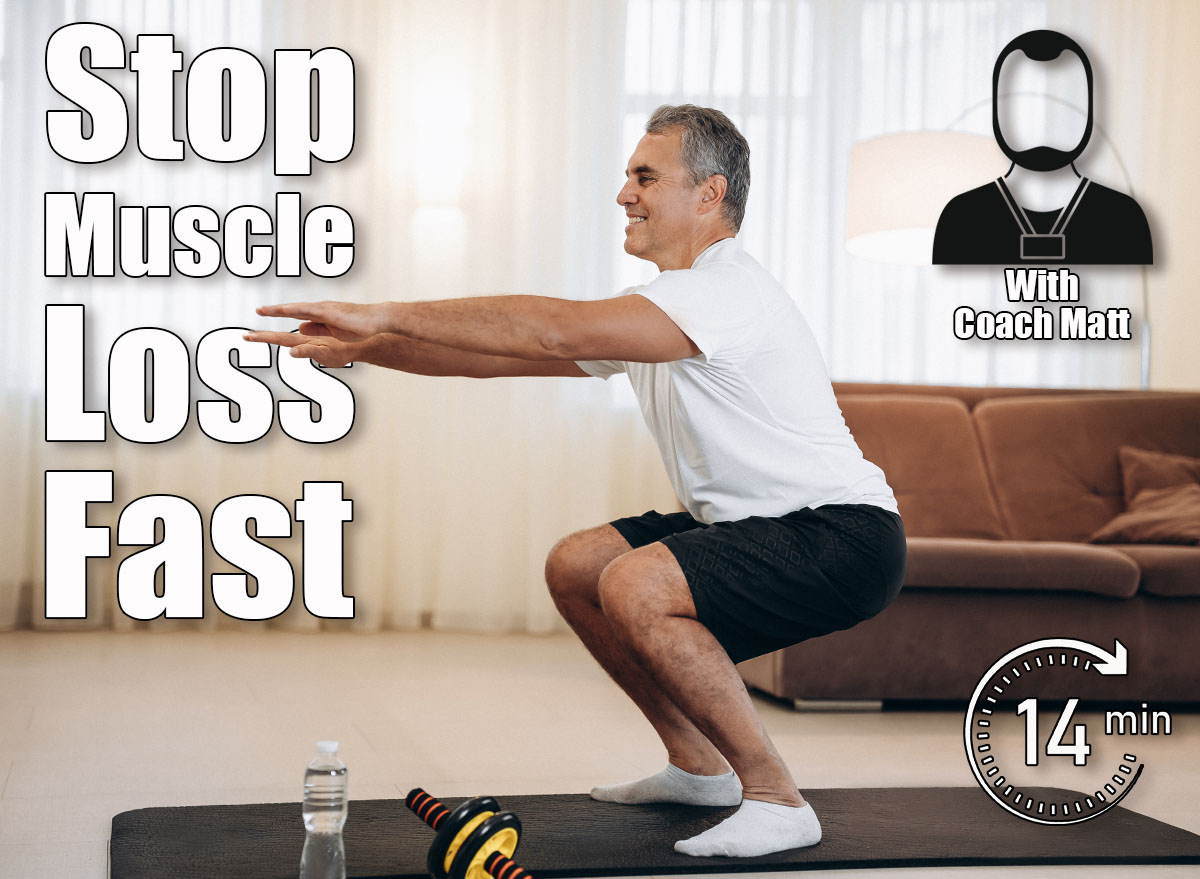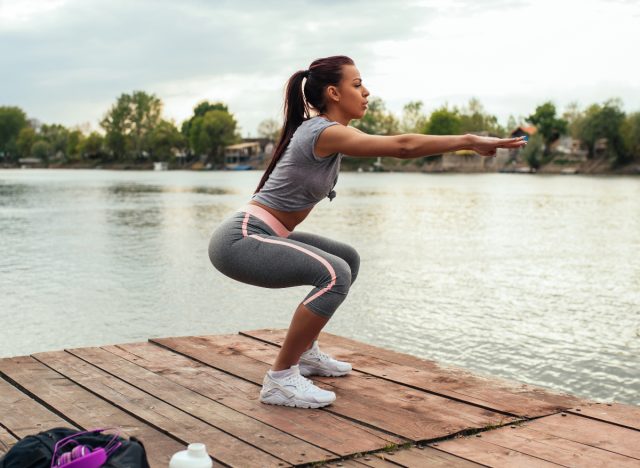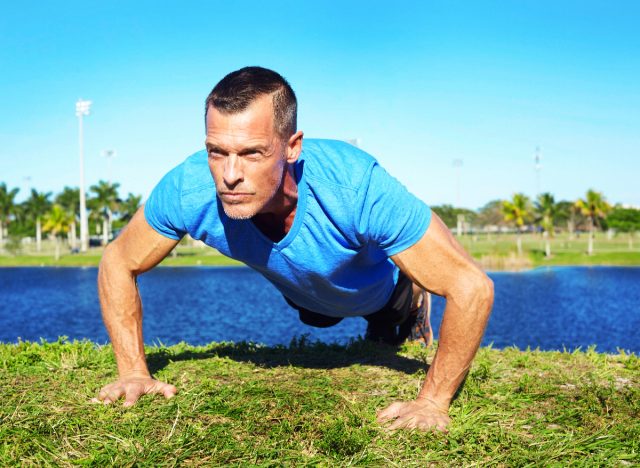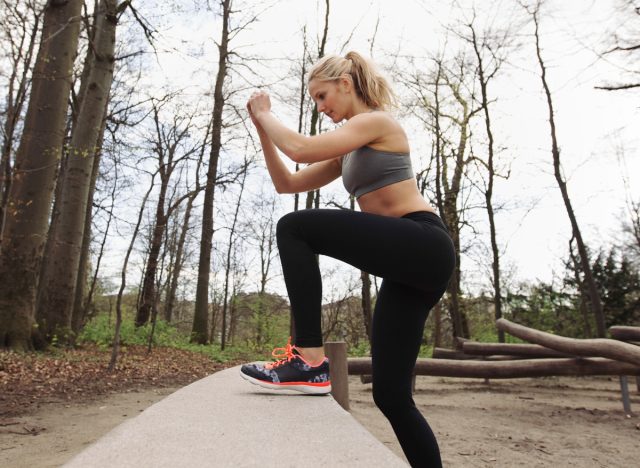4 Bodyweight Exercises That Stop Muscle Loss Better Than Weight Machines After 45

After you reach 40, it’s natural to experience hormonal shifts, slower recovery time, and a decline in physical activity. All of this speeds up sarcopenia, the loss of lean muscle mass. Building and maintaining muscle is essential for leading an all-around healthy, independent, and active lifestyle. The good news is, you can work out with just your body weight to achieve noticeable strength gains. We spoke with Matt Dustin, NASM corrective exercise specialist with Garage Gym Reviews, who shares four stellar bodyweight exercises that stop muscle loss more effectively than weight machines after 45.
“Muscle is critical for maintaining metabolism, protecting bone density, and preserving balance and mobility,” Dustin stresses. “If you don’t fight back with resistance work, you lose strength and independence more quickly.”
That’s where bodyweight training comes in clutch.
“Bodyweight training demands full-body coordination, stability, and balance. Machines usually isolate a muscle while providing extra support, but bodyweight movements make your joints, stabilizers, and nervous system work together,” Dustin adds. “That makes them more functional and they translate better to real-life strength.”
4 Effective Bodyweight Exercises To Prevent Muscle Loss
Focusing on your core, glutes, and legs is essential, as Dustin notes they’re “the foundation for movement and balance.” Of course, don’t neglect your upper body—especially the shoulders and back—to maintain solid posture and avoid injury.
“But if you don’t train your lower body and trunk, mobility, and independence go fast,” Dustin adds.
Squats

“Squats help with strengthening your legs and glutes while also testing your balance,” Dustin tells us.
- Stand tall, feet shoulder-width apart.
- Extend your arms ahead of you or place your hands on your hips.
- Bend at the knees and hips to lower into a squat.
- Descend until your thighs are parallel to the floor.
- Press through your heels to return to standing.
- Perform 3 sets of 12 to 15 reps.
Pushups

“If regular pushups feel tough, try doing an incline version. They work your chest, shoulders, arms, and core all at the same time,” Dustin notes.
- Start with a high plank with hands under your shoulders and your body straight.
- Bend your elbows and lower your chest toward the floor.
- Maintain a long, straight body as you lower.
- Press back up, straightening your arms.
- Perform 3 sets of 8 to 12 reps.
Step-ups

“Think of this exercise as training for everyday movements like climbing stairs—it keeps your legs and hips strong,” Dustin says.
- Stand tall, feet parallel and hip-distance apart.
- Bring your hands to your hips.
- Step one foot forward.
- Engage your core as you bend your knees, lowering to form 90-degree bends in both legs.
- Keep your upper body straight.
- Press through your front heel and the ball of your back foot to rise back up.
- Perform 3 sets of 10 reps per leg.
Plank Shoulder Taps
“This move builds core stability and gives your shoulders some extra work, too,” Dustin points out.
- Assume a high plank with your hands under your shoulders and body straight.
- Lift your right hand to tap your left shoulder.
- Place your hand on the floor.
- Tap your left hand to your right shoulder.
- Continue to alternate.
- Perform 3 sets, holding each plank for 20 to 40 seconds, tapping each shoulder as you go.